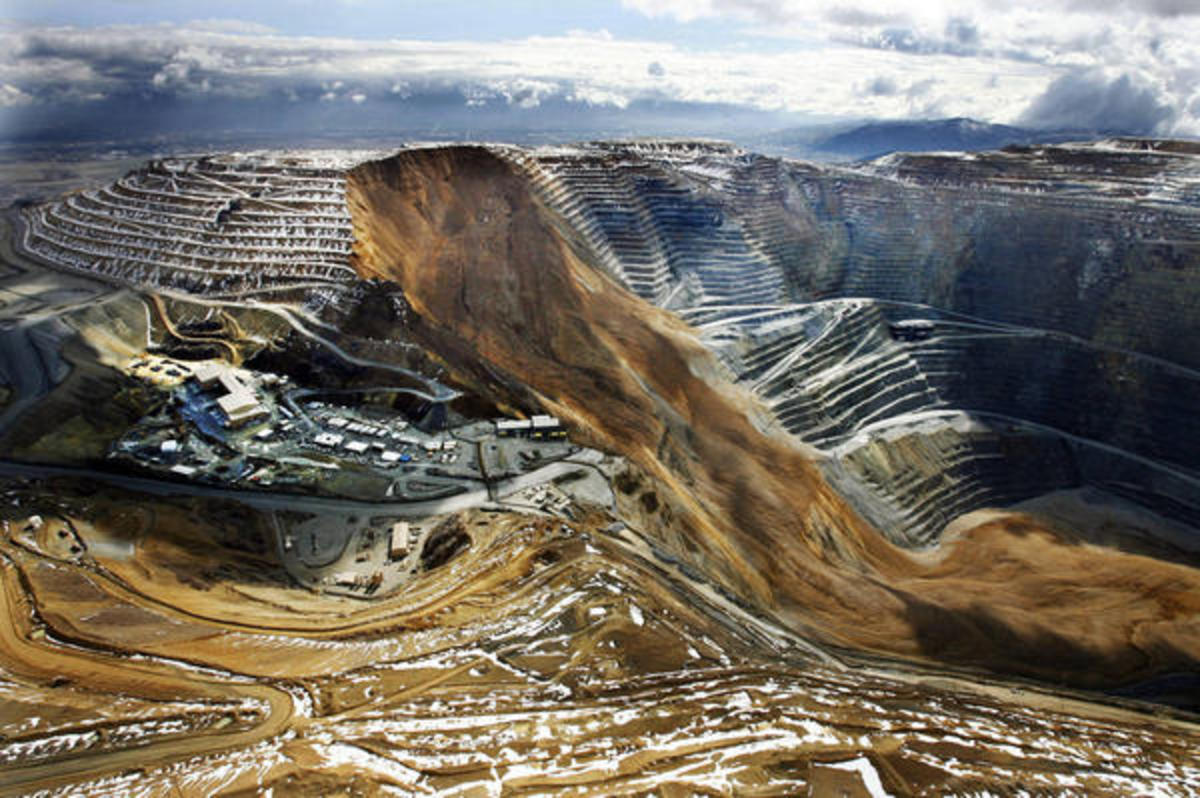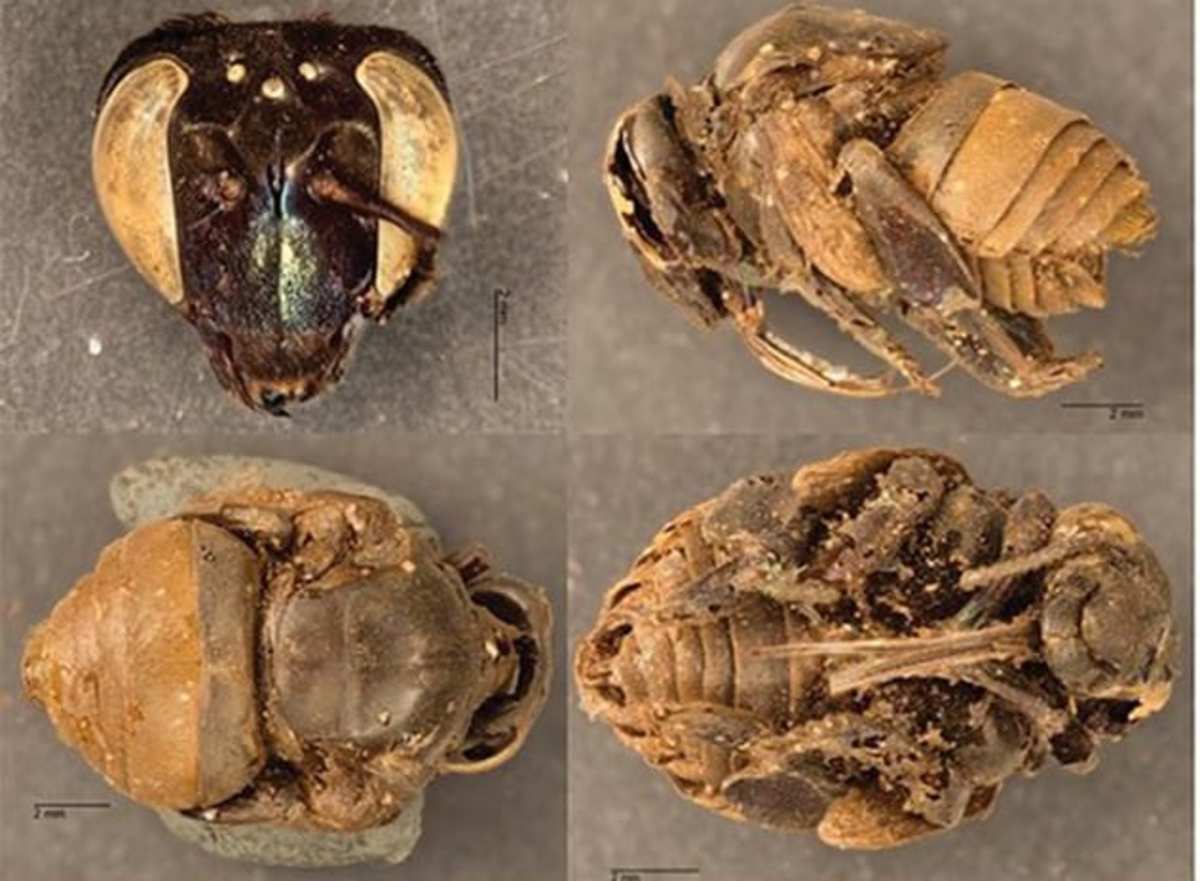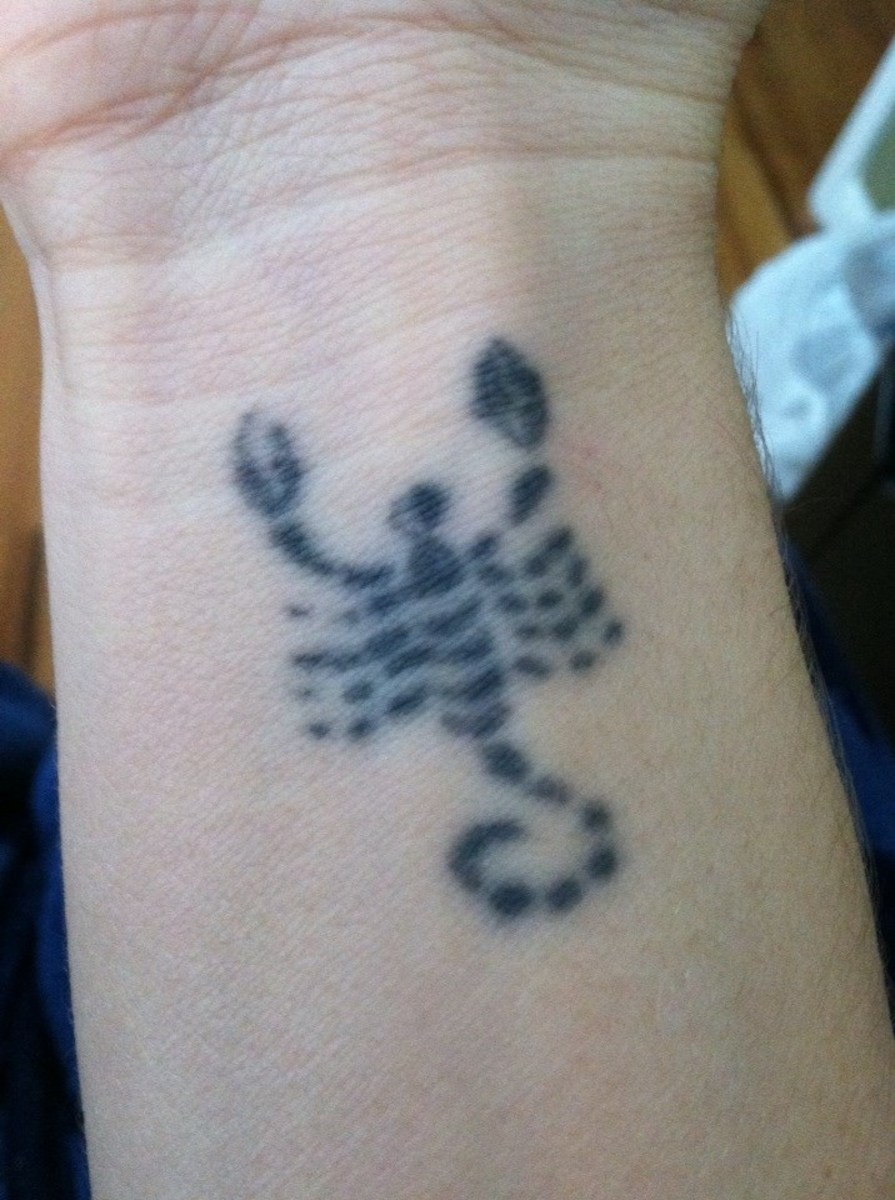How to Make a Mummy
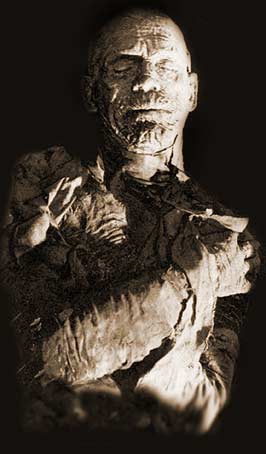
The Egyptians believed that death was simply a temporary interruption, rather than complete cessation, of life, and that eternal life could be ensured by preservation of the physical form through Mummification. That is why mummification is very important for ancient Egyptians.
The word 'mummy' is not of Egyptian origin, but is derived from the Arabic 'mumiyah', which means 'body preserved by wax or bitumen'; This term was used because of an Arab misconception of the methods used by the Egyptians in preserving their dead.
In Egyptian beliefs, the human soul is made up of five parts: the Ren, the Ba, the Ka, the Sheut, and the Ib. In addition to these components there was the human body which called the ha. Death occurs when a person's life-force (ka) leaves their body.
The process of mummification
1. Purification

2. Removal of the Organs
A hooked instrument is used to pull the brain out of the head through the nose (please, don't try this at home), a hole was punched through the thin bone at the top of the nostrils (the Ethmoid bone). This brain removal practise seems to have started around the time of the late Middle Kingdom, or early New Kingdom period onwards
The organs would then be embalmed separately.
The one organ that was not removed was the heart - the heart was seen as most important to keep within the body, it was thought of as the place of wisdom, intelligence in the body. If the deceased were ever to reach the Beyond it was essential that the body and heart were not separated (the heart was needed in the Weighing of the Heart ceremony), The heart was not to be cut from the body - if this happened accidently with the removal of the other internal organs then the embalmer will put it back.
3. Body cleansing a.k.a the bath of Natron
Once the organs were removed, possibly on the 16th day after death, the body is then washed out with palm wine and will now be soaked in natron to dry it out. The cavities made in the body by the extraction of the internal organs were also packed with natron - so that the drying process caused by the natron happened both inside and outside the body.
The organs were treated with the same proceedure as the rest of the body, they were even individually wrapped in linen and placed in the tomb. The placement of the internal organs in the tomb varies - up to the 21st dynasty they were placed within canopic jars, during the 21st dynasty the organs (still wrapped in linen) were placed back in the body, and in the Late Period the organs were placed between the legs of the mummy.4. Body stuffing
5. The Wrapping of the Mummy
At least fifteen days and 20 layers of linen bandages were needed to fully wrap the body. This slow process was often interrupted by the need for prayer and ritual. The linen used for the bandages may have come from many different sources - the linen may have been specially made painted with magical inscriptions to protect the mummy, or for the poorer burials ordinary household linen would have been used. The linen used as bandages were torn into strips approximately 2 to 8 inches in width. The limbs of the body would each be wrapped separately at first (the head and neck, toes and fingers, arms and legs followed by the torso). During this wrapping many amulets would be placed within the wrappings - again to protect the mummy in the Beyond.
Once the individual parts of the body had been wrapped, the body was then completely wrapped from head to toe - the positioning of the arms during this final wrapping varied over the centuries (sometimes the arms were crossed or extended down to the groin - or straight down by the sides of the body). The final moment of wrapping was the use of a single large sheet of linen which covered the whole mummy which was then secured by linen bands.
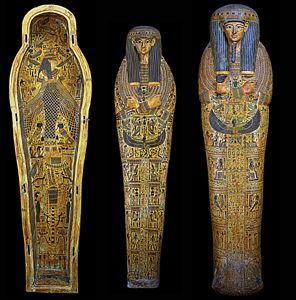
6. Mask and coffin
A Portrait Mask might be placed over the head once the body was wrapped. It is important that the portrait mask looks like the deceased. Some of the pharaohs have solid gold masks which adorned with precious stones. The use of masks with the burial dates originally to the Middle Kingdom, during some periods throughout the rest of ancient Egyptian history a mask made from cartonnage was placed over the head and shoulders of the mummy.
Once the mask was in place further amounts of resin were poured over the mummy as well as perfumes and unguents - finally the mummy would be placed in the coffin just before burial. All the equipment used in the mummification process should be gathered together and buried with the body so that nobody else can use it.
7. The burial rite
In the day of the burial, the deceased would have then been dead for seventy days. The coffin (which of course consist of the body) would be taken by boat to the western side of the river, where the sun sets, and be buried there. A priest leads a procession of mourners, followed by bearers carrying food offerings and all the objects that considered will be needed in the afterlife. Priests burn sweet smelling incense, recite prayers and perform the opening of the mouth ceremony when the body reach the tomb.

